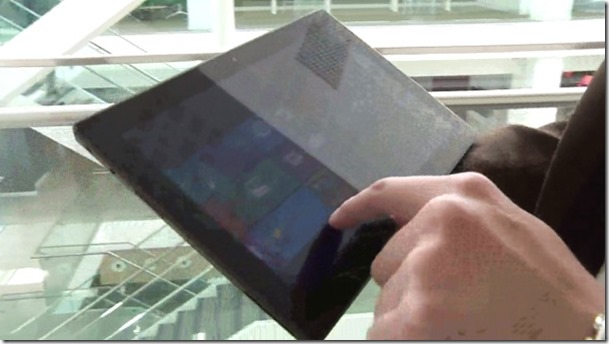Top 10 New Features in Windows 8.1
Posted by Heri Gunawan | Posted in Computer News , Microsoft , Windows 8 | Posted on 7/19/2013
0
Learn about the best new features in the forthcoming OS update
By now, it should come as no surprise that Windows 8 has failed to take businesses by storm. According to NetMarketShare, Windows 8 now has just a bit more market share than the much-reviled Windows Vista release. Microsoft hopes to turn around those negative perceptions with the latest release of Windows 8.1 (formerly code-named Blue). Windows 8.1 addresses several of the major complaints that customers have had about Windows 8. The Windows 8.1 release is currently in preview, but at the Worldwide Partner Conference in Houston, Microsoft announced that Windows 8.1 will be available in August 2013. The Windows 8.1 release will be a free download from the Windows Store. Here are the top 10 new features in Windows 8.1
1. New Start button—Answering the primary criticism of Windows 8, Microsoft is returning the Start button to Windows 8.1. The new Start button is in the lower-left corner but unfortunately it doesn't work the way the Start button works in Windows 7 and earlier. Instead of showing your installed programs, the new Start button simply switches you over to the Metro Start screen. Right-clicking it or clicking and holding it displays a context menu where you can open Program and Features, Power Options, Event Viewer, System Device Manager, Network Connections, Task Manger, and a number of other handy options.
2. Boot to desktop—Providing the ability to boot directly to the desktop addresses the other longstanding complaint about Windows 8 and the new Start screen. With Windows 8.1, you can open the Taskbar and Navigation properties, then click Navigation and select the setting Go to the desktop instead of Start when I sign in. The next time Windows 8.1 starts, you’ll boot directly into the desktop, allowing you to avoid the new Start screen altogether.
3. Different tile sizes—As with Windows Phone 8, the new Windows 8.1 Start screen offers a variety of tile sizes, including a new large and small tile layout. Using the different-sized tiles helps you optimize your Windows 8.1 Start screen, and the new large tile size enables the tiles to display a lot more information.
4. New Apps display—Another handy change in Windows 8.1 is the new Apps display, which you can access by swiping up on the Start screen or by clicking the down arrow. The Apps screen shows all of the installed applications and lets you sort the new Apps display in a number of ways, including by name, date installed, or most used.
5. Work Folders—Another handy new feature in Windows 8.1 is the new Work Folders capability. Work Folders allows a user to sync data to his or her device from a folder located on a Windows Server 2012 R2 server using the File and Storage Services role. Work Folders let you keep local copies of your files on your devices, and the Work Folders feature will automatically synchronization your data to the central server.
6. Workplace Join—Workplace Join is a new networking capability that allows administrators to grant access to some corporate resources for devices that aren’t members of a Windows domain. If a user registers his or her device, IT can grant the device limited access to corporate resources and enable some management policies for the device. This feature requires Server 2012 R.
7. Deeper SkyDrive integration—You get 7GB of free SkyDrive usage, and Windows 8.1 is able to use that as the default document storage location as well as to back up Windows 8.1 to SkyDrive. There are also options to sync your device settings, including the Start screen and the position of tiles and other desktop personalization settings. In addition, Microsoft will provide a new Windows RT SkyDrive app.
8. Side-by-side Apps—Another annoying limitation of Windows 8 is the inability to display more than two apps at a time. Although Windows 8.1 still doesn’t allow you to run apps in windows the way StarDock’s ModernMix does, Windows 8.1’s new Snap View features allows you to run up to eight apps side-by-side if you have two 2560x1600 monitors. Smaller 1280x780 displays are limited to running two apps side-by-side.
9. Auto-triggered VPN—The VPN support in Windows 8.1 has been enhanced with improved support for a broader range of VPN clients. In addition, Microsoft is adding a new auto-trigger VPN capability to Windows 8.1 apps that enables apps that need to access the organization’s resource through a VPN to automatically launch the VPN when the app starts.
10 New Windows Store—The Windows Store has been redesigned to be more like Google Play or Apple’s App Store. There is a new Spotlight section to feature different apps, and there are lists of top free apps right on the home page. A new description page provides more information about each of the apps. Windows 8.1 apps will also now update automatically.
By : Michael Otey





